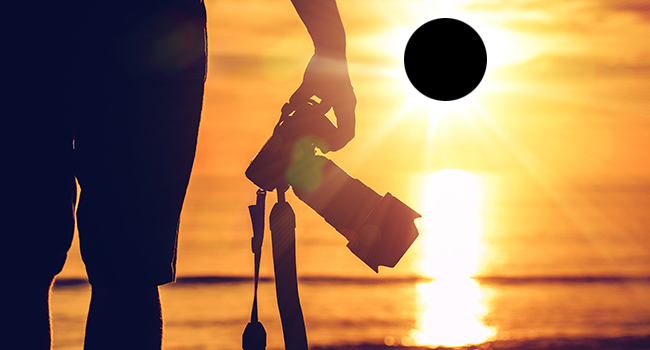
This coming Monday, the moon will block the sun in the great American eclipse, and many of us will want to memorialize it. But, just like staring at the sun can trash your eyes if you don’t have the proper protection, pointing your camera at the sun for long periods can ruin it. So, if you’re taking a photo of the eclipse, here’s how to do it right.
- Keep in mind that this won’t be something you can fire a shot off the day of. This requires practice, and getting to know some specialized equipment, even if you’re snapping a few quick shots with a smartphone. Set aside some time this weekend to fiddle with your gear and figure out how you want to shoot, especially as the full eclipse will only last two minutes and you may need to run some long exposures to get the full effect. The good news is that experienced eclipse photographers have shared their knowledge; this handy chart will walk you through the necessary ISO, stop numbers, and shutter speed.
- Don’t rely on a stock app for smartphones. Download a camera app such as DSLR Camera that gives you control of exposure, shutter speed, and ISO (sensor sensitivity) and work with it so you can take better shots.
- Get eye protection. You’ll need to look at the sun off and on to frame your shots, so protect your eyes with ISO 12312-2:2015 rated goggles or glasses.
- For selfies and snapshots with your phone where you’re not photographing the sun directly or filling the frame with the eclipse, you don’t need a solar filter in most cases. Treat it like you’d treat the sun in a normal shot.
- Use a solar filter for closeups of the sun, unless it’s in full totality. You’ll probably need to buy it from your local camera shop at this point, although you can also use No. 14 welder’s glass, which you can find in better-stocked hardware stores and welding supply warehouses. Don’t try and stack polarizers or ND filters to see if you can jury-rig a solution; what’s cheaper, a solar filter or a new camera?
- Disable live view and electronic viewfinders; it’s too much light to concentrate on your camera’s sensor, even with a filter. This is especially important with smartphones, as there is no physical viewfinder on them; you may be better off borrowing or buying a cheap DSLR if you want an eclipse photo of your own.
- If you want a giant, viewfinder filling photo of the sun, you’ll need a lens with a range between 500mm and 1000mm. If you’re in the market for a cheap new lens, try a catadiotrophic telephoto lens, aka a mirror lens, which uses curved mirrors and optics to extend range. Remember, though, that these lenses have a fixed aperture and low contrast, so you won’t be using it for much beyond this.
- Using a smartphone, or just don’t want to buy a new lens? If you know somebody with a telescope, try digiscoping, where you center your camera over the eyepiece of a telescope and take a picture. Be warned, this takes a steady hand and some practice, so try it out before you scope.
- Bracket your shots! When the eclipse is in totality, there will be brilliant exposures available to you, across twelve stops. Especially with modern post processing, you should try and capture as many across that range as you possibly can.
Above all, have fun. This is a once-in-a-lifetime opportunity. You won’t see this again, and photographers won’t have a chance to snap this again. So get your shots, and have fun doing it.
